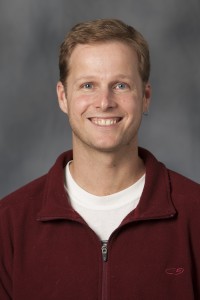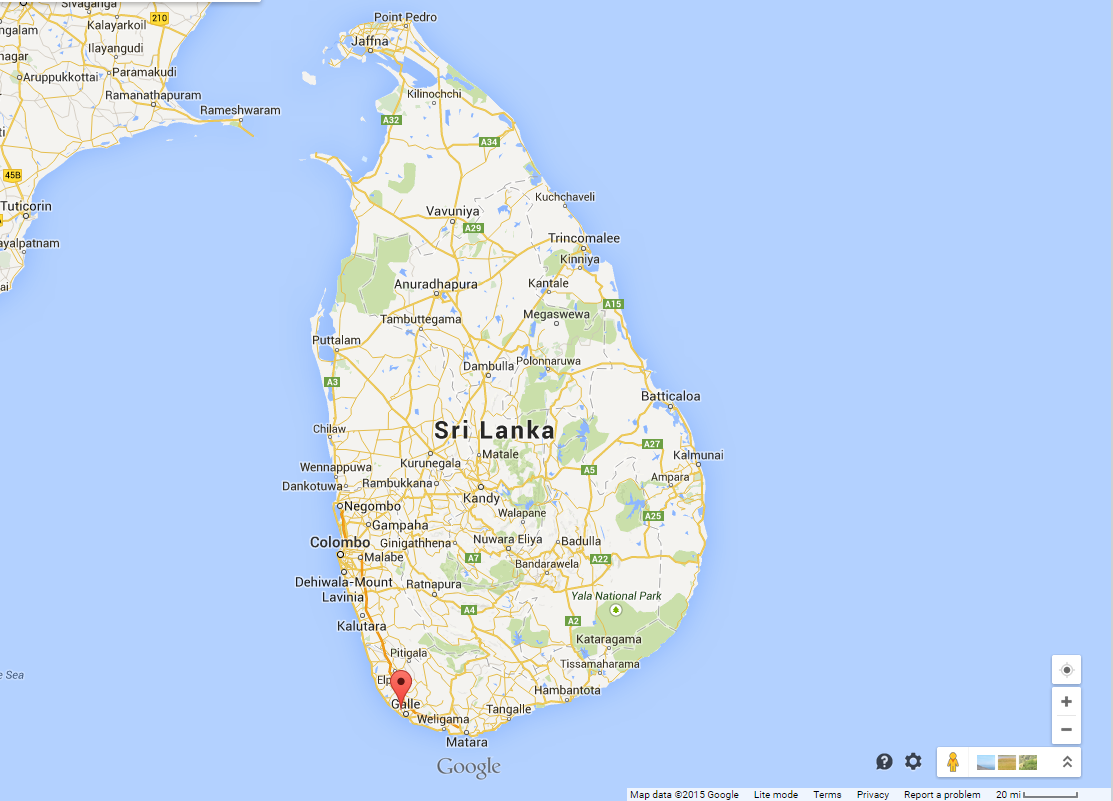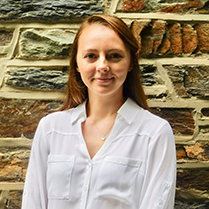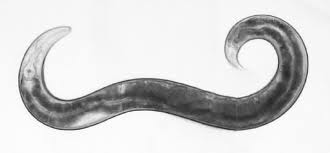By Savannah Volkoff
Snowmaggedon was just beginning in Durham when I sat down with Joel Meyer to talk about his work in our Superfund Research Center and his tenured position in the Nicholas School (visit his lab website here). Let the record show, Joel was clad in a tweed, leather-elbow-patched jacket and holding a bubble-blowing pipe. True professor material.

Assistant Professor
Savannah: In terms of Project 3 research, what’s your piece of the puzzle?
Joel: Rich [Di Giulio’s] group does all of the experiments and Dave [Hinton’s] group looks at all the histopathological types of endpoints and we’re trying to look at mitochondrial endpoints. Our piece of the puzzle is understanding two things:
1) how the contaminants at the Elizabeth River affect mitochondrial function; and
2) how altered mitochondrial function may or may not be a part of the phenotype of those resistant fish.
How long have you been doing SRC work?
(laughs) Well, as a graduate student I started working on the Elizabeth River project, but prior to it being funded as part of the Superfund Center. So I worked for probably about two years on the Elizabeth River as a student and did different work for my postdoc. I worked on mitochondrial DNA damage and repair and then when I came back I took a role in the Superfund Center’s Genomics Core.
So, how has your role changed over the years?
The part that I think sort of explains my whole career direction is as a graduate student I was trying to understand the mechanisms by which these fish had adapted to the toxicity of those sediments…clearly I didn’t answer that question because Project 3 is still trying to figure out the answer! (laughs)
I accidentally stumbled across the possibility that mitochondria might be a really important target. I stumbled upon it partially because a master’s student working with me, Jim Smith, discovered that manganese superoxide dismutase (present in mitochondria) was elevated in Elizabeth River fish livers and that was heritable. A lot of the changes I saw in the fish weren’t heritable and therefore couldn’t explain the heritable resistance, and that got me thinking about mitochondria.
I read about how PAHs bind to DNA in mitochondria, can be metabolized and activated in mitochondria, and cause damage that can’t be repaired. I thought that was fascinating! I tried to read more about that, but as far as I could tell, nobody knew what repaired thatkind of DNA damage in mitochondria. I also realized I didn’t know much about mitochondria and I also didn’t know much about DNA repair, so that’s what sort of set my direction for my postdoc.
Then I went to the lab of Ben Van Houten, which at the time was in the Laboratory of Molecular Genetics at NIEHS. His group was one of two that sort of specialized in mitochondrial DNA effects, along with Bill Copeland’s group. During that time, I transitioned a lot to working with C. elegans because I thought it would be a better genetic model for studying mitochondrial DNA processes. I learned a lot of tools and when I was able to come back here I was finally able to really say, “okay now, what happens to DNA damage in the mitochondrial genome that’s irreparable?” And that was the first focus in the lab and remains the largest focus in the lab. There are sort of two parts to it:
1. If you’ve got this damage that can’t be repaired, what does happen to it? what’s the fate of that damage? does it just stay damaged forever?
2. What are the effects of that kind of damage? does it compromise mitochondrial function? does it lead to cells undergoing apoptosis? what does it do?
With Project 3, we’ve got this contaminated sediment that has a lot of contaminants and many of them would be expected to cause mitochondrial damage and we’re doing exposures early in life, which is interesting because mitochondrial function changes quite a bit during development, so it’s also a part of that bigger picture Superfund Center question we have of what effects do early life exposures that aren’t acutely toxic, have in later life?
You touched on why you study mitochondria, but what kindled your relationship with C. elegans?
For my postdoc I wanted to study the effects of mitochondrial dysfunction and it turns out that’s hard to do and the reason it’s hard to do is there are very few toxicants that affect just mitochondria and not anything else. So, I struggled a bit with coming up with a good project to answer that question. The project I ended up coming up with, well what I was trying to do, but mostly failed, was to study a disease called Friedreich’s ataxia. It’s a human disease and it’s caused by a defect in production of a protein called frataxin. It’s not caused by a toxicant exposure but it was a nice way to work specifically with mitochondrial dysfunction because you might combine a model for Friedreich’s ataxia with exposures to some toxicants. Also, I had the idea that people suffering from that disease might be especially vulnerable to exposure to mitochondrial toxicants.
I collaborated with John Freedman and Windy Boyd to try to study frataxin knockdown in C.elegans and look at mitochondrial DNA damage and mitochondrial function and other endpoints. For a variety of reasons that were mostly technical, it didn’t go as expected and we didn’t get great results. We got a few, but I was able to put a DNA damage and DNA copy number assay into C.elegans and realize that I really liked C.elegans as a model. I’ve been mostly working with it ever since.
What drew you to environmental toxicology?
Oh, that’s easy! A combination of two things. One, I knew I liked science just from the “Cool! This is really fun to think about. I’m a nerd”, perspective. It’s just really fun to ask questions and come up with ways to test ideas. The answers to those questions are not known. But that’s just kind of the fun part. I also take great pleasure in work that I consider to be valuable to society at large. And I was drawn to toxicology specifically (there are of course other areas that would combine those two things) because of work I did in Guatemala when I became aware of pollution issues. I became aware that I didn’t know enough about them to be very helpful in dealing with them or even knowledgeable. “Something seems bad to me, but I don’t really know…is it bad?” I actually came to graduate school largely because I wanted that knowledge.
How did you hear about Rich’s lab?
I was in Guatemala for five years before I came to graduate school and I came back here and visited Rich’s lab and a few other places that I considered attending and based largely on paper-catalog searches (well, this was pre-internet-there was internet but it was not like it is now!) I found a variety of programs that I was interested in, visited, and was most struck by the combination of science and collegial environment in Rich’s lab and in the Nicholas School, in general.
Congratulations on tenure! How do you think it affects your research?
I tried very hard prior to having tenure to not be too constrained in the questions I asked by sort of practical questions of, “is this publishable? is this fundable?” I didn’t want to spend six years of my life doing conservative work in order to try and get tenure. And I think I did a reasonably good job of that, but I think what tenure allows me to do is really say, “ok, I’m going to do the research I want to do”. Basically it allows me to do work that I think is either more exciting or risky or maybe has higher societal importance but which may be simultaneously unfundable and may lead more slowly to publications.
How did you celebrate?
We, uh, the lab and I went…well, first of all, I got my hair dyed purple, which was an agreement that the lab wrung out of me. *laughs* Yeah, and I had a leather elbow patched jacket that my dad lent me, since I don’t actually own one. I’m not sure you’re allowed to have tenure without one of those jackets. I’m pretty sure it’s a rule. I actually looked for pipes at Salvation Army-type stores and couldn’t find any. But one of my graduate students, John Rooney, found one that blows bubbles. So, I had the pipe and the jacket and purple hair and the whole lab also had purple hair and we went down to Geer Street and Fullsteam for dinner and drinks.
What was your favorite thing to do in Durham when you were in grad school?
I would say going to the Eno River…camping, hiking, and a few times fishing.
What’s your favorite thing to do now?
It might be the same. There are more things to do now. I love the Museum of Life and Science. I love Carolina Theater. There are various festivals and things downtown, farmer’s markets, restaurants, and bars of all sorts. There are a lot of things I like in Durham. I have a hard time picking just one. It’s the overall environment that I like a lot.






